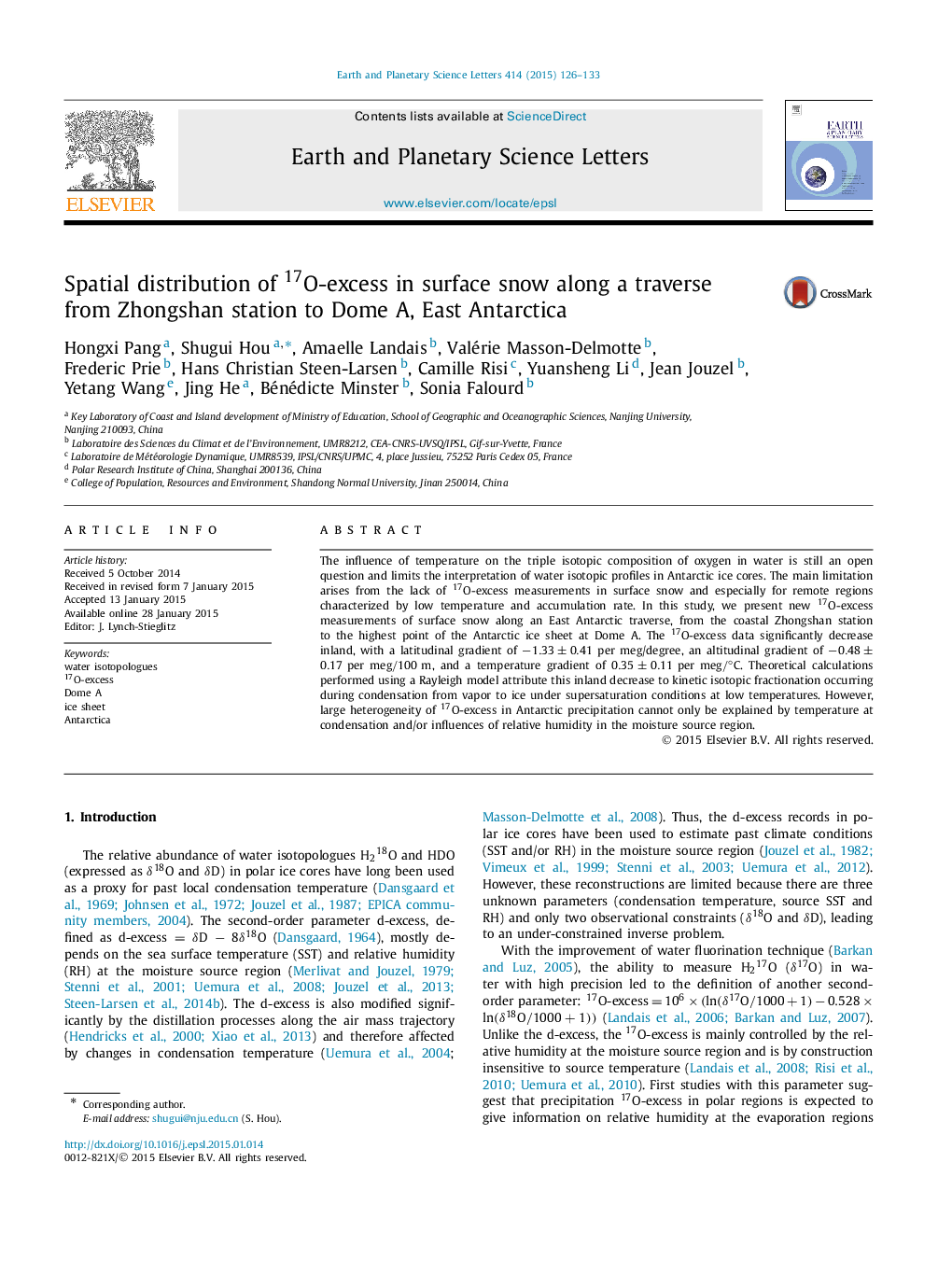| Article ID | Journal | Published Year | Pages | File Type |
|---|---|---|---|---|
| 6428575 | Earth and Planetary Science Letters | 2015 | 8 Pages |
â¢Our 17O-excess shows a decreasing trend from the coast to the central Antarctica.â¢The 17O-excess dataset in Antarctica shows large variability.â¢The sensitivity analysis of water isotopologues at Dome A was performed.
The influence of temperature on the triple isotopic composition of oxygen in water is still an open question and limits the interpretation of water isotopic profiles in Antarctic ice cores. The main limitation arises from the lack of 17O-excess measurements in surface snow and especially for remote regions characterized by low temperature and accumulation rate. In this study, we present new 17O-excess measurements of surface snow along an East Antarctic traverse, from the coastal Zhongshan station to the highest point of the Antarctic ice sheet at Dome A. The 17O-excess data significantly decrease inland, with a latitudinal gradient of â1.33±0.41 per meg/degree, an altitudinal gradient of â0.48±0.17 permeg/100 m, and a temperature gradient of 0.35±0.11 permeg/°C. Theoretical calculations performed using a Rayleigh model attribute this inland decrease to kinetic isotopic fractionation occurring during condensation from vapor to ice under supersaturation conditions at low temperatures. However, large heterogeneity of 17O-excess in Antarctic precipitation cannot only be explained by temperature at condensation and/or influences of relative humidity in the moisture source region.
